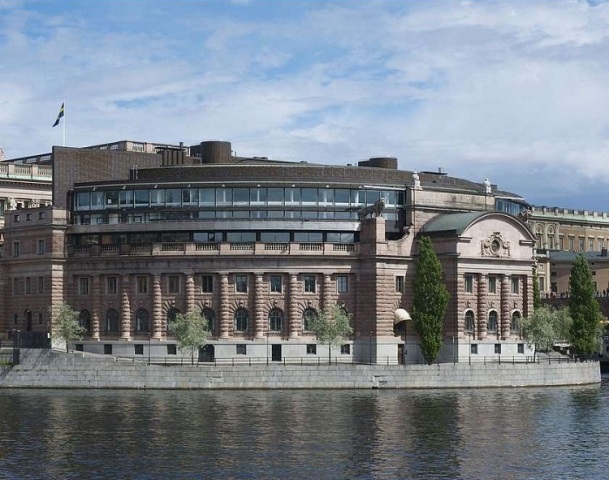Stockholm is the capital of Sweden, situated on the country’s east coast. The fun and interesting facts about Stockholm, given here, will help you explore the city further.
Facts About Stockholm

Image: By Ankara (Own work) [CC-BY-SA-3.0 (http://creativecommons.org/licenses/by-sa/3.0) or GFDL (http://www.gnu.org/copyleft/fdl.html)], via Wikimedia Commons
Stockholm is located on several islands on the east coast of Sweden, at the mouth of Lake Mälaren. The capital city of Sweden, it is also the country’s largest municipality, apart from being its largest continuously built-up area. The city also serves as the seat of Sweden's principal stock exchange. People have slowly started exploring Stockholm, the city with a rich history and striking contrasts. It is the place where you will find medieval buildings standing hand-in-hand with modern architectural wonders. As you move outside the city, you will come across an archipelago of 24 000 islands, which seem to beckon you to explore their sandy beaches. If you want to know more about this magnificent city, make use of the information given below.
Fun & Interesting Facts About Stockholm
- Stockholm is the capital of Sweden, along with being the largest city in the country.
- The city houses Swedish Government, the Parliament and also the official residence of the Swedish Monarch.
- Since 13th century, Stockholm has been serving as the political and economic center of Sweden.
- The city was established in 1252, by Birger Jarl, as a fortified island defense outpost against Baltic pirates.
- Stockholm formally became the national capital of Sweden in 1634.
- The strategic location of Stockholm, on 14 islands on the south-central east coast of Sweden, at the mouth of Lake Mälaren, by the Stockholm archipelago, has been historically important.
- The city has a humid continental climate or maritime. The summers are warm and pleasant, while winters are cold and freezing.
- Stockholm is often known as the ‘World’s Smallest Big City’ or the ‘World’s Biggest Small Town’.
- The city is ranked as one of the ten most popular congress destinations in the world.
- Stockholm’s oldest surviving building is The Riddarholmskyrkan (Riddarholm Church), a Franciscan monastery built in 1270.
- In 1710, a catastrophic plague obliterated about one third of Stockholm’s population.
- The city became the venue for the award of the first Nobel Prizes, in the year 1901.
- Stockholm Globe Arena is currently the largest hemispherical building in the world.
- Stockholm became the ‘European City of Culture’ in 1998.
- The city’s subway is also known as the world's longest art gallery, with the majority of its stations being adorned with paintings, sculptures and mosaics.
- Stockholm is the second most visited city in the Nordic countries,
- The city is sometimes referred to as ‘Venice of the North’, thanks to its beautiful buildings and exquisite architecture, abundant open water and numerous parks.
- In The 2008 Global Cities Index, Stockholm ranked 24th in the world, 10th in Europe, and first in Scandinavia
- Stockholm has been nominated by GaWC as a global city, with a ranking of Alpha-.
- The total absence of heavy industry makes Stockholm one of the world's cleanest metropolises.
- The people of Stockholm are dependent on the service industry for their daily bread, which accounts for 85% of the jobs in the city.
- Stockholm houses two UNESCO World Heritage sites - the Royal Palace Drottningholm (within Ekerö Municipality) and the Skogskyrkogården (The Woodland Cemetery).
- In 1998, Stockholm was tagged as the ‘European City of Culture’.
- Stockholm is one of the most crowded museum-cities in the world, with around 100 museums, visited by millions of people every year.
- Nationalmuseum is the most renowned national museum in Stockholm, with Sweden's largest collection of art: 16,000 paintings and 30,000 objects of art handicraft.
See also
More from iloveindia.com
- Home Remedies | Ayurveda | Vastu | Yoga | Feng Shui | Tattoos | Fitness | Garden | Nutrition | Parenting | Bikes | Cars | Baby Care | Indian Weddings | Festivals | Party ideas | Horoscope 2015 | Pets | Finance | Figures of Speech | Hotels in India : Delhi | Hyderabad | Chennai | Mumbai | Kolkata | Bangalore | Ahmedabad | Jaipur
- Contact Us Careers Disclaimer Privacy Policy Advertise With Us Lifestyle Sitemap Copyright iloveindia.com. All Rights Reserved.







